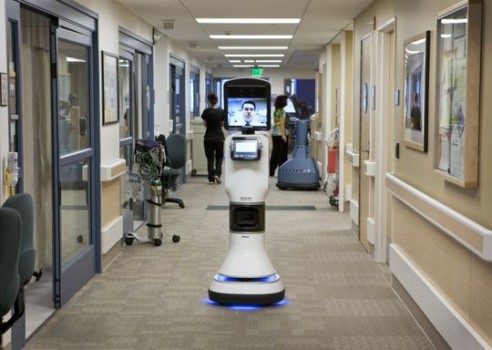The patient appeared to be dying. She had chronic lung disease, and she had been told she had little reserve left and had barely survived on home oxygen for the past few years. Each time she picked up a lung infection, the buzzards circled closer. Now she had tripped, fallen, broken a bone, had surgery, and her subsequent infection seemed to have pushed her past the point of no return. Still, I held off the palliative care/comfort care team for as long as I could, and she rallied. Everyone saw how tough she was and a fighter and praised my intervention, but it just wasn’t enough in the end and she died.
I was reminded of the role I had played with that end-stage lung patient recently when a mechanical device wielding a video screen was rolled into an intensive care unit of a Kaiser Permanente hospital in California so that a doctor could remotely tell his patient that the lung scan showed no lung reserve left and he was a goner.
I am not questioning the poor prognosis, though I can tell you that the practice of medicine is often not that well defined. Sometimes, patients you have given up on actually do defy the odds and survive. But more to the point, the process of delivering bad news or potential bad news necessitates an in-person give and take. The 78-year-old patient’s granddaughter, who was in the ICU at the time, had every right to be distraught over the method of communication.

Recent News
April 22, 2024
March 19, 2024
February 28, 2024
February 22, 2024 | Conversations on Health Care
May webinar highlights: “The Commercial Market: Alternative Payment Models for Primary Care” Nate Murray explains w… https://t.co/KX9Wi2w6oY —
10 months 2 weeks ago
@CMSinnovates’ primary care strategy is rooted in a 2021 @theNASEM’s report which called #primarycare “foundational… https://t.co/glbPxvCysg —
10 months 2 weeks ago
@CMSinnovates has a new #primarycare strategy, envisioning “ACO-based primary care model tests that may focus on pr… https://t.co/aJGF1z411l —
10 months 2 weeks ago
- Page 1
- ››
Secondary menu
Copyright © 2024 Primary Care Collaborative




